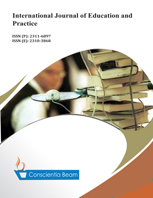Validating a model of industrial literacy 4.0 in higher education among postgraduate students: A structural equation modeling approach
DOI:
https://doi.org/10.18488/61.v11i4.3511Abstract
This research aimed to develop a new industrial literacy model 4.0 in Higher Education. The research population consisted of 2,958 postgraduate students. Using a random sampling technique, the study obtained a sample of 312 postgraduate students. Survey data were analyzed for validity and reliability of the model, and later developed through confirmatory factor analysis (CFA) and exploratory factor analysis (EFA), using AMOS 25. The results of the model were trimmed by following the model development method to obtain goodness of fit (GOF). according to the criteria that enabled research generalizations to be carried out. The stages of the research were carried out by studying theory and literature, compiling research models, developing variable operational studies, data collection and processing, and reporting. The results of this study hinted at some best practices for developing literacy 4.0 in Higher Education in theory and measurement. The results showed that new industrial literacy 4.0 in tertiary institutions was formed by data literacy, digital literacy, and human literacy along with its constituent indicators, which met the requirements of expert validation, statistical validity and reliability, and goodness of fit. Future researchers should use the analysis of the forming factors of literacy 4.0, modeling and developing them on a wider scale in tertiary institutions, to advance educational standards and meet the megatrend of future student education skills.





